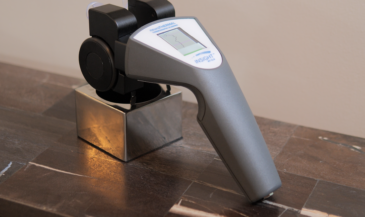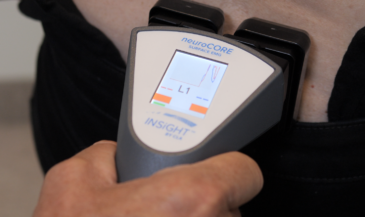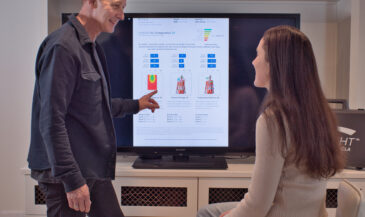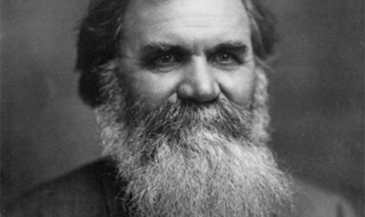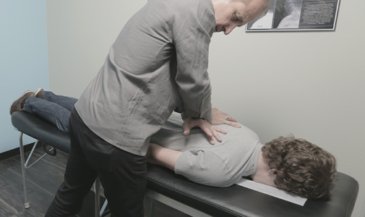A perception that medicine is “scientific” and chiropractic is “unproven” seems to pervade a growing element of our profession. This perspective has resulted in a low perceived value of our unique principle and practice.
By Dr. Christopher Kent
Science provides investigators with a useful method of inquiry. Scientific methods have led the healing arts out of the world of anecdotal observation, myth, and superstition. However, doctors must not lose sight of the fact that science may not be the only valid method of inquiry.
Furthermore, it must be realized that while predictability may be considered in designing clinical strategies, all that ultimately matters is what is effective for a given patient in a specific circumstance. Educational institutions producing health care providers must guard against graduating practitioners who are automatons following flow charts rather than thinking, feeling, human beings.
Although science is not an enemy of chiropractic, scientism most certainly is. Scientism limits all fields of human inquiry to contemporary technology. Smith states that scientism “…refers to an uncritical idolization of science — the belief that only science can solve human problems, that only science has value.” Holton observed that “Scientism divides all thought into two categories: scientific thought and nonsense.” (1,2)
What’s wrong with that? A practitioner of science 100 years ago would be forced to declare cosmic waves, viruses, and DNA “unproven” concepts. Such a scientist, bound by the limitations of the technology of the times, would be unable to “prove” or “disprove” the existence of such things. Our hypothetical scientist might go one step further and deny the possibility of their existence, active as some of them may have been in the dynamics of health and disease! Scientism is a scourge which blinds the visionary and manacles the philosopher.
Aldous Huxley was acutely aware of the folly of limiting all human inquiry to the scientific method. He stated, “The real charm of the intellectual life — the life devoted to erudition, to scientific research, to philosophy, to aesthetics, to criticism — is its easiness. It’s the substitution of simple intellectual schemata for the complexities of reality; of still and formal death for the bewildering movements of life.” (3) Science has a place in chiropractic — scientism does not.
Just as scientism limits human inquiry to available technology, bad science, characterized by questionable research designs, leads to faulty conclusions. For example, some critics of chiropractic claimed that it was impossible for subtle disrelationships termed “subluxations” to produce enough pressure on neural structures to alter their function. Through a process of “rationalism” based on animal studies, and a poorly designed study using human cadavers, it was concluded that chiropractic theory was false. (4)
The point is simple. Bad science leads to faulty conclusions. And any scientific inquiry is limited by the technology available to the investigator, the design of the experiment, the analysis of the data, and the conclusions drawn from the data. In short, if you can’t reliably measure something, you can’t investigate it scientifically.
That’s fine, unless you are trying to investigate something for which reliable and valid measurements have not or cannot be devised. For instance, we cannot measure innate intelligence. Does this mean that it is not “real” and that we should abandon the concept merely because we have no technology to detect or quantitate it? I think not.
Baruss wrote, “If we are serious about coming to know something, then our research methods will have to be adapted to the nature of the phenomenon that we are trying to understand. The purpose of science should take precedence over established methodologies…Similarly, belief in a universal, inflexible scientific method that can guarantee truth belongs to scientism. If one is authentic, one’s effort to develop one’s understanding by changing opinions into questions may cut so deeply that traditional research methods themselves are called into question and are replaced by others that serve one’s purpose better. One may need to draw on the totality of one’s experience and not just on that subset that consists of observations made through the process of traditional scientific discovery.” (5)
Our profession has very limited research resources. To our credit, we have done a phenomenal job with what we have. Unfortunately, there is a growing trend in chiropractic to embrace allopathic research designs emphasizing symptomatic rather than physiologic change. A plethora of projects are attempting to determine if “manipulative therapy” is effective in ameliorating back pain and other symptoms.
Many of these designs are inherently flawed in that they fail to adequately define the nature of the intervention applied (a basic adjustment is quite different from an atlas toggle or a lumbar roll). Worse, from a philosophical standpoint, symptoms are used as outcome criteria rather than the correction of subluxations.
It is sometimes argued that in the absence of reliable and valid indicators of subluxation, subluxation-based outcome evaluation is impossible. Indeed, this is where our initial research efforts must be directed. Developing technologies to reliably assess the clinical manifestations of vertebral subluxation is a high priority item. It is not an excuse, however, for failing to use existing technologies which can reliably evaluate manifestations of the vertebral subluxation.
Fortunately, social scientists have developed “paper and pencil” instruments to assess patient-perceived wellness and quality-of-life issues regardless of whether specific diseases or identifiable symptoms exist. Such tools may not find favor with mechanists who idolize the randomized clinical trial.
Chiropractic research is in very real danger of succumbing to the scientism so pervasive in the allopathic community. And by copying the experimental designs of the symptom-oriented allopathic model, chiropractic’s unique non-therapeutic approach may be lost.
I have heard many chiropractors parroting the misconception that patients and insurance companies will only pay for care rendered to symptomatic patients.
Such utter nonsense has caused many to promote the notion that D.C.s should treat pain syndromes only. In fact, chiropractic may be the only health care discipline which sports a faction that does not consider early detection of an asymptomatic, progressive process a virtue, if not a necessity.
Abnormalities can exist in the absence of symptoms! Consider asymptomatic breast cancer, asymptomatic dental caries, or the “silent killer” hypertension. Basing outcome assessments for these conditions on patient symptomatology would have disastrous results.
I find it repugnant to force an asymptomatic patient to wait for pain to manifest before receiving an adjustment. Clinical strategies must be based upon subluxation-based outcome assessments which address aspects of health beyond the amelioration of symptoms.
References
1. Smith RF: “Prelude to Science.” Charles Scribner’s Sons. New York, NY, 1975. P. 12.
2. Holton G: “The false images of science.” In Young LB (ed): “The Mystery of Matter.” Oxford University Press. London, UK, 1965.
3. Huxley A: “Point Counter Point.” Quoted in Smith RF, op cit P. 8.
4. Crelin ES: “A scientific test of the chiropractic theory.” Am Sci 61(5):574, 1973.
5. Baruss I: “Authentic Knowing. The Convergence of Science and Spiritual Aspiration.” Purdue University Press. West Lafayette, IN. 1996, pp 40-41.




















































